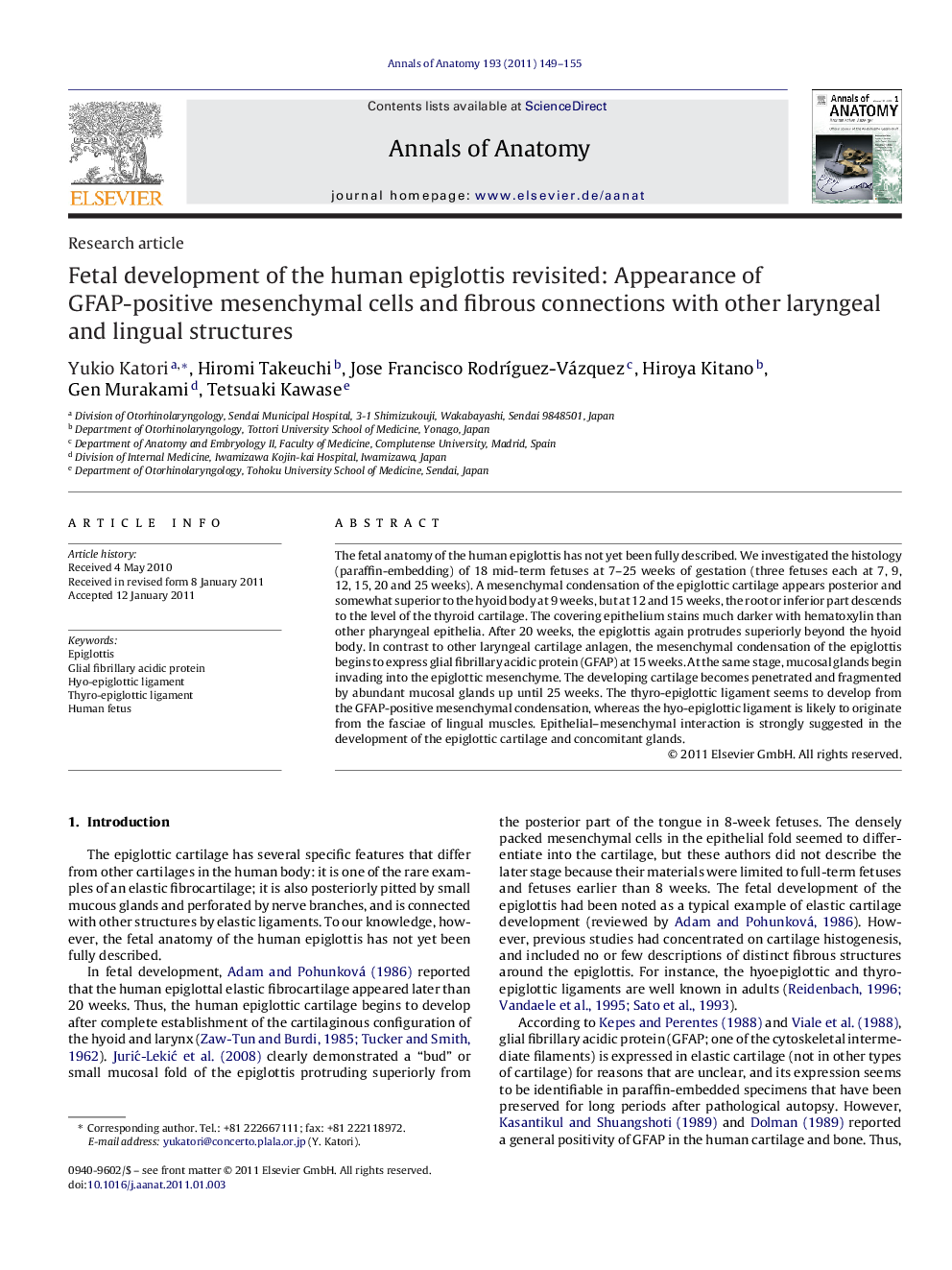| Article ID | Journal | Published Year | Pages | File Type |
|---|---|---|---|---|
| 8462119 | Annals of Anatomy - Anatomischer Anzeiger | 2011 | 7 Pages |
Abstract
The fetal anatomy of the human epiglottis has not yet been fully described. We investigated the histology (paraffin-embedding) of 18 mid-term fetuses at 7-25 weeks of gestation (three fetuses each at 7, 9, 12, 15, 20 and 25 weeks). A mesenchymal condensation of the epiglottic cartilage appears posterior and somewhat superior to the hyoid body at 9 weeks, but at 12 and 15 weeks, the root or inferior part descends to the level of the thyroid cartilage. The covering epithelium stains much darker with hematoxylin than other pharyngeal epithelia. After 20 weeks, the epiglottis again protrudes superiorly beyond the hyoid body. In contrast to other laryngeal cartilage anlagen, the mesenchymal condensation of the epiglottis begins to express glial fibrillary acidic protein (GFAP) at 15 weeks. At the same stage, mucosal glands begin invading into the epiglottic mesenchyme. The developing cartilage becomes penetrated and fragmented by abundant mucosal glands up until 25 weeks. The thyro-epiglottic ligament seems to develop from the GFAP-positive mesenchymal condensation, whereas the hyo-epiglottic ligament is likely to originate from the fasciae of lingual muscles. Epithelial-mesenchymal interaction is strongly suggested in the development of the epiglottic cartilage and concomitant glands.
Related Topics
Life Sciences
Biochemistry, Genetics and Molecular Biology
Cell Biology
Authors
Yukio Katori, Hiromi Takeuchi, Jose Francisco RodrÃguez-Vázquez, Hiroya Kitano, Gen Murakami, Tetsuaki Kawase,
